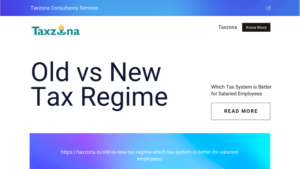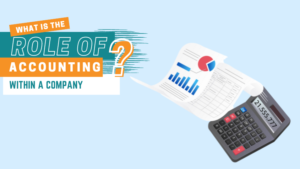What is an MIS Report? MIS Report stands for Management Information Systems, it may help you for valuable insights from your data. It’s crucial to have access to the relevant data in your firm at the correct moment if you want to make smart decisions or judgements about your business. They should be present and a must in any company.
What is an MIS Report
A management information system, or MIS, is a term used in computerised administration. In its most basic form, a management information system (MIS) report is just a system that supplies useful data to the upper echelons of your organisation.
Management information systems work in tandem with an organization’s personnel, IT infrastructure, and operational procedures. It also explains how your company’s partnerships with other entities and individuals shape its operations.
Daily operations may be highlighted in a MIS report to help you track your company’s growth. These reports are quite helpful for making decisions. As such, it may be used as a benchmark against which your company’s operations and communications can be evaluated.
As a result of the proliferation of cutting-edge technology, management information systems are now indispensable to the smooth operation of every business.
To Speak to our MIS Report Expert, Contact us at +91 98204 44477
How do MIS Reports Work❓
Once, you understood about what is an MIS Report, now let’s understand how it works. An MIS report of various types is generated on a regular basis (which is either monthly or quarterly in most cases). Each division in your firm is responsible for compiling one of these reports, which is then delivered to upper management for detailed analysis of your company.
Reports generated by management information systems (MIS) that analyse raw data, trends, patterns, and comparisons to pertinent historical data. Managers may keep tabs on the goings-on in every section of the company with the help of MIS reports. And they help make things clearer and make conversations easier.
They also allow the firm managers and the management team to make educated choices, spot and prevent difficulties, and capitalise on the current market trends. When deciding on a new product launch, for instance, the MIS report may be used as a resource for data on the market and on employees.
You can boost the company’s short-term and long-term success using the information provided by the MIS reports.
Importance of MIS Reports
The idea of success and expansion of your business depends on MIS reports if necessary and important information can be utilised through the same. Some of the reasons why a MIS report is so crucial are listed below.
Data from a wide variety of sources may be compiled in MIS reports. Employees, administration, paperwork, executives, and raw sales data all fall under this category. Each of these may help you see issues in your business and find viable solutions.
They are useful in determining the course of action to take.
After accumulating information from the aforementioned resources, it is shown graphically. Bar graphs, pie charts, and other graphical representations of the data fall under this category. Because of this, analysing the data and drawing conclusions from it is simpler and quicker.
As a bonus, a MIS report may be used to monitor the development and stability of a company’s finances. Many businesses rely on it to record and evaluate their financial data.
An MIS report may also be used as an efficient means of communication between workers and management or among workers themselves.
Types of MIS Reports
Every business has its own unique MIS reports. Different businesses will provide varying reports. Raw data from the process is reported by the Management Information System. People, organisations, and financial transactions all contribute to the creation of this raw data.
Various MIS reports compile a wide variety of data elements and display them in a way that allows for easy inference and analysis. Throughout a company, specialised departments submit MIS reports that detail their work.
According to the nature and purpose of the data being examined, several MIS reports may be generated. We’ve done our best to outline the most popular MIS report types used by businesses.
Here are a Few Samples of the Various MIS Reports that Can Be Generated.
- The Summary Reports
- The Trend Reports
- The Exception Reports
- On-Demand Reports
- Financial Reports
- Inventory Reports
- Sales Reports
- Budget Reports
- Production Reports
- Cash Flow Statements
- Funds Flow Statement
- Budgeted & Actual Profit Report
- Machine Utilisation Report
- Predictive Reports
- Report on The Ideal Time
- Abnormal Losses Report
- Cost Reports
- Statistical Publications
- Orders in Hand Report
- Other Reports
Components of MIS Reports
Simply put, a MIS report does not exist in isolation. There are a number of parts to it, all of which contribute to the whole. The primary sections of a MIS report consist of the following:
1. People
Users are those who interact with a data management system. Employees, managers, executives, and anyone who engages with your firm directly or indirectly are all considered users of a management information system (for example, people who supply raw materials for your manufacturing process).
2. Data
Such information may come from a variety of sources inside an organisation. Decisions, analyses, and projections are all made using this information in the corporate world.
3. Business Procedures
How your company collects, processes, and stores its data is defined by its business procedures. Company policies may be more easily implemented with the help of these processes. Your company’s production processes, recruiting and on-boarding practices, and regular operating procedures are all good examples of such systems.
4. Hardware
All the physical tools your company employs are included here. Computers, printers, copiers, servers, and routers all fall into this category.
5. Software
The software parts are the apps that let you manage and process information inside. Data visualization tools, database management systems (such SQL and NoSQL), and spreadsheets are all examples (example. Tableau and Power BI). Your company’s reliance on various types of software may shift as different goals are pursued.
Conclusion
The information gathered by a management information system may be used to spot problem areas and capitalise on trends and patterns. Managers may be left in the dark if they don’t have access to a reliable MIS system.
You may increase productivity, make better business choices, foster better internal communication, and capitalise on your company’s strengths with the aid of a management information system.
If you’re the kind of business owner that cares about your company’s success, you need a management information system (MIS).
Without a MIS, management is forced to wing it rather than use data to inform their choices. It’s likely that your company has already taken use of a MIS system. In addition, businesses may take use of a variety of software tools designed to streamline the process of data collecting and display in MIS reports.
Visit Taxzona (An Accounting Services Company in Mumbai) if you’re on the lookout for a means to save expenses and increase productivity in your company. They have stacks of company plans, policies, pitch decks, letters, and other paperwork.










